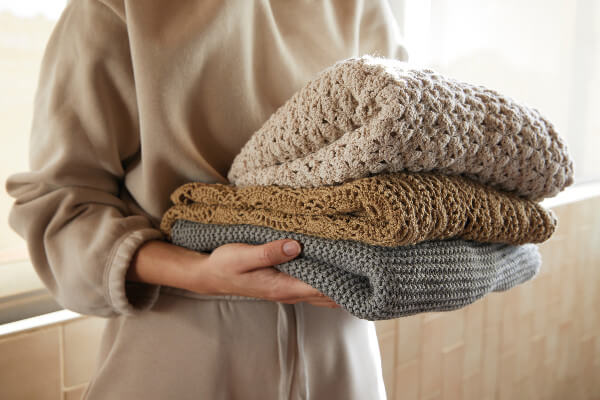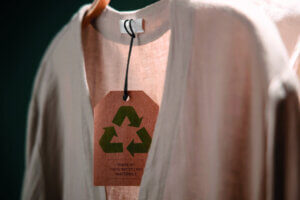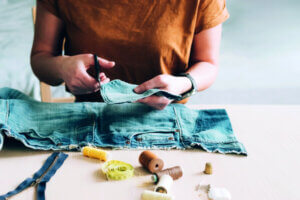Spinning a New Yarn

The route towards making your wardrobe a little greener by recycling your old clothes, renting instead of buying, and opting for more sustainable fabrics going forward.
 Fast fashion is falling spectacularly out of fashion. Of course, it’s still a thriving industry, but many of us are becoming wise to the fact that no one really benefits from outrageously cheap clothes made in far-flung factories that fall apart within weeks.
Fast fashion is falling spectacularly out of fashion. Of course, it’s still a thriving industry, but many of us are becoming wise to the fact that no one really benefits from outrageously cheap clothes made in far-flung factories that fall apart within weeks.
Fortunately, it is becoming easier than ever to be eco-conscious AND supremely stylish. Better yet, many of these options will actually save you money in the long run.
Recycle
Many of us already partake in clothes recycling either by donating to clothes collection banks and charity shops or even just buying from charity shops. Alternatively, you can sell clothes directly online. But what if you have lots of good-quality, high-ish value garments and simply want a wardrobe update? You might want to consider attending clothes swapping events or organise your own ‘swishing’ event with friends, neighbours, or the community. There are also several online platforms and apps that facilitate clothing and accessory exchange.
Rent
Renting clothes has become a popular and sustainable option in the fashion industry. It allows you to enjoy wearing stylish clothing without the long-term commitment of owning them. There are various platforms and services that offer clothing rental options, from choosing one-off pieces for special events or occasions to subscription models. With the latter, you pay a monthly fee and receive a set number of clothing items to borrow each month based on your style preferences and size. This is an excellent way to maintain an up-to-date wardrobe without incurring huge costs and is also ideal for those with minimal storage space.
Be fabric aware
In a world where sustainability is becoming not just desirable, but necessary, these alternative fabrics and leathers are fast becoming viable options for global brands who want to do their bit for our planet. You may in fact already own items that contain these materials, and they are well worth looking out for in your future purchases.
Tencel
Already a ubiquitous eco-fabric, Tencel is already used by several major clothing brands and designers. Produced by environmentally responsible processes from the sustainably sourced natural raw material wood, Tencel is not only a wonderfully soft and breathable material, it also combines beautifully with other fabrics such as cotton, silk and polyester for maximum versatility.
Econyl
 Garment recycling has come a long way since the days of simply re-purposing a denim dress into a new handbag – though this is still a great idea! – Econyl re-generated nylon is made from nylon waste. With an emphasis on closing the loop, this brilliant and innovative brand confesses to having an appetite for creating an infinite number of new products, but only if it is created using existing resources. With 10,000 tonnes of Econyl raw material saving 70,000 barrels of crude oil, this fabulous fabric is currently used to create everything from swimsuits to designer handbags and even carpets.
Garment recycling has come a long way since the days of simply re-purposing a denim dress into a new handbag – though this is still a great idea! – Econyl re-generated nylon is made from nylon waste. With an emphasis on closing the loop, this brilliant and innovative brand confesses to having an appetite for creating an infinite number of new products, but only if it is created using existing resources. With 10,000 tonnes of Econyl raw material saving 70,000 barrels of crude oil, this fabulous fabric is currently used to create everything from swimsuits to designer handbags and even carpets.
Piñatex
You may have heard of strawberry laces, but what about pineapple shoes? Astonishingly, Piñatex is a leather alternative made from the leaf waste of pineapples. This fluff-like pineapple leaf fibre (PALF) gets mixed with a corn-based polylactic acid (PLA) and undergoes a mechanical process to create Piñafelt, a non-woven mesh which forms the base of all Piñatex collections. Coloured using natural pigments and coated with resin to give addition strength, durability and water resistance, this luxurious leather alternative is already doing its bit to lessen environmental impact of mass leather production and chemical tanning.
